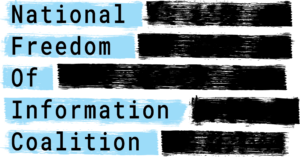
Florida Times-Union by Mark Woods
October 10, 2017
Ryan Zinke hopped off a boat after touring the Okefenokee National Wildlife Refuge.
The secretary of the Department of the Interior was headed to Florida last week to check out Irma damage near the Everglades and Lake Okeechobee. He saw the Okefenokee on a map, covering more than 600 square miles in southeast Georgia, and decided to add it to the itinerary.
He only visited eight of the 27 national monuments under review. While he talked about listening to local voices, he often avoided some of the most local and American of voices — tribes supporting the monuments — and produced a report that dismissed public comments overwhelmingly opposing changes as a “well-orchestrated national campaign.”
His report recommends changes to 10 parks.
During the Okefenokee stop, he said that the Antiquities Act was designed to protect objects, not a large landscape. When asked how the current argument differs from the one Ralph Cameron made 100 years ago about Grand Canyon National Monument, Zinke said: “What was the object? It was the Grand Canyon.”
I’ve sometimes wonder where today’s leaders would have stood a century ago in the heated battle over preserving the Grand Canyon. Even more relevant is where they’ll stand on its preservation today and tomorrow.
The Grand Canyon isn’t one of the places under review. But it is under attack – threatened by hopes of nearby development, uranium mining and much more.

“Are We Losing the Grand Canyon?” asked a National Geographic story.
Kevin Fedarko wrote the piece. He has spent years rafting and hiking the Grand Canyon. His book, “The Emerald Mile,” is a great read about a record-setting river trip in the canyon. He’s in Florida this week, speaking at a First Amendment Foundation event Wednesday night in Orlando.
The title of his talk is the same as headline of the National Geographic story, ominously minus the question: “Losing the Grand Canyon.”
He says that what is happening in Arizona is relevant in Florida, Georgia and everywhere public lands still exist.
“If we can’t protect this one place, what else can we protect?” he said. [READ MORE]
